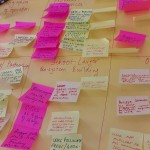We are working with consultants Nayantara Janardhan and Mannish Gupta and their team from Start Up! in India to refine our strategy for tackling disease prevention there. Here is a Q&A with the team from Start Up!
What are the most urgent issues Indians face today and how will Arogya World address some of these in the future?
The rate of escalation of NCDs in India is alarming. With over 60 million diabetics, India has the world’s largest diabetic population. Also, around 12,000 Indian children die of diabetes-related causes every year. Diabetes affects people in rural and urban India and across all ages. Contrary to traditional belief, it is no longer a disease of affluence or old age.
However, diabetes and other non-communicable diseases (NCDs) can be prevented or controlled fairly easily through healthy food habits, physical activity, and smoking/tobacco cessation. India is slowly waking up to the threat, but despite being aware of prevention, many are unable to implement it on their own.
There is a need for specialized social ventures to step forward and address these issues across the continuum of adults and children. This is a need that Arogya World fills very effectively in India. It has established proof of concept in the last 4 years and is now ready to seize the mantle of an ecosystem builder in the space of NCD prevention.
Arogya has taken programs to workplaces and schools—where there is a critical mass of its constituency. This has encouraged a mainstreaming of conversations around NCDs in these spaces. Arogya now needs to deepen its engagement with existing clients and partner organization to reach out to larger organizations as well as create more sustainable behavior change.

Start Up! consultants join Nalini Saligram to discuss strategies for NCD prevention programs in India.
What factors did you study to make your recommendations?
First Start Up! conducted in-depth interviews with board and senior leadership team members as well as existing clients and partners. We discussed the current model as well as opportunities and barriers for scaling the model.
Then Start Up! conducted market research with more than 60 secondary sources and over 21 sector experts, schools and school program leaders, corporations and PR/CSR/accounting specialists. This research allowed us to assess market trends and demand gaps and recommend enhancements to current service offerings.
What surprised you?
While there are many models for NCD prevention and care, no organization that we researched was working as effectively as Arogya World across the child to adult continuum.
India has a very large—and young—workforce working in sedentary jobs. There is an urgent need for this community to be made aware of this threat and given ways to lead healthier lives.
What are you most excited about for Arogya World’s future?
During our research, it became apparent that it is very possible for Arogya World to deliver its mandate and impact the lives of more than 1 million Indians by 2020—causing real and positive behavior change.
Also, Arogya has the potential and position to take leadership in this space. In addition to deepening its programs such as Healthy Workplace, Women & Children and mDiabetes, it has the potential as an ecosystem builder to engage with more and different stakeholders.

